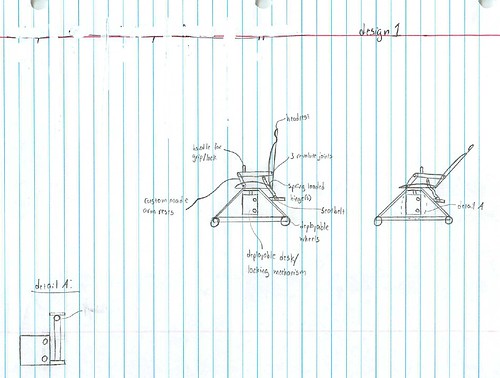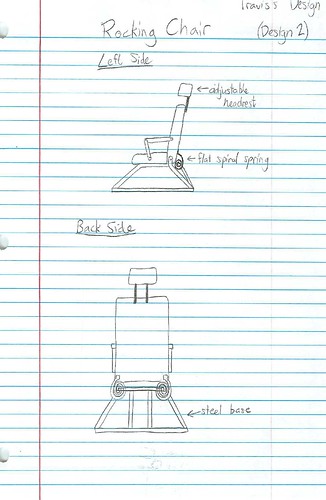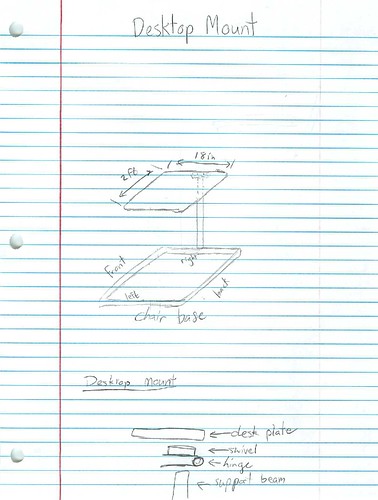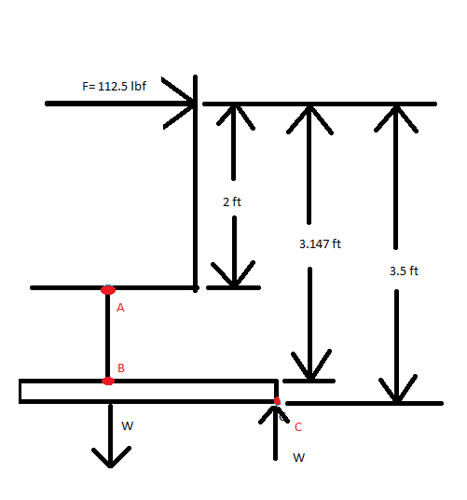List of group members
Josh Blair
Rachel Crane
Andrew Redmon
Corey Glascock
Travis Peacock
Abstract
Design a chair that can be rocked violently without tipping.
Introduction
The Child that our team will be working with is a 14 year-old boy approximately 5’1” 130 lb. He is autistic with limited motor skills and mobility, as well as severe vision impairment. He is also tactile defensive and is reluctant to touch textured surfaces. We have been asked to customize a chair for him that will allow a strong, fast rocking motion without tipping over. He has been known to rock with enough force to tip over the wheel chair in which he primarily sits currently. We have been informed that the chair will be kept almost exclusively at the school he attends. We have been coordinating mainly with his physical therapist and his teacher at school, as they are the most aware of his needs in that environment.
Design Specifications
- Ability to rock without tipping over.
-Able to accommodate future growth up to 6’ and 200 lb
- A lap belt
- Transportable so that it can be moved to other classrooms and school buildings.
- Dark Materials to provide a higher contrast with bright colors.
-Smooth materials for the areas of the chair that he would frequently touch.
- Should either be able to pull up to a desk or have an attachable table the size of a desktop.
-Design should be quiet to reduce distraction on the rest of the class.
-A high back would be preferred
-An Adjustable headrest to prevent head injuries while he is rocking.
-The family would prefer the chair to have the appearance of a normal chair, as much as is possible.
Design Concepts
Describe potential/considered designs in this section.
Concept Evaluation
| Consideration | Design Concept 1 | Design Concept 2 | Design Concept 3 | |
|---|---|---|---|---|
| Safety | 4 | 3 | 5 | |
| Cost | 3 | 3 | 2 | |
| Durability | 5 | 5 | 4 | |
| Function | 5 | 5 | 4 | |
| Appearance | 4 | 4 | 3 | |
| Total Score | 21 | 19 | 18 | |
| Design Choice | Design Concept 1 or Design Concept 2, A combination of the two has also been considered. | |||
Design Overview

Analysis
Describe the three types of analysis performed on the design. Use equations and schematics as needed.
Data Acquired through estimate and experimentation:
Using accelerometers our group found the acceleration of the child to be 1.25 G’s or approximately 40.25 ft/s 2. In addition to the acceleration, we know that the child weighs 135 lb currently. We were asked to accommodate his future growth as he ages. By our estimations the child will only be able the throw 60% of his total weight into the back of the chair due to the fact that only his upper body is moving. Having said that, we will over estimate his weight to be 150 lbs, and we will then take 60% of that for our calculations.
Force Analysis:
m = (150 lbm)(.6) = 90 lbm
F = ma
F = (90 lbm)(40.25 ft/s2) = (3622.5 lbm*ft/s2)(1lbf/32.2 lbm*ft/s2)
F= 112.5 lbf
Bill of Materials

Assembly Instructions
Include as many descriptive pictures as possible.
Implemented Design
Include pictures of the final product.




